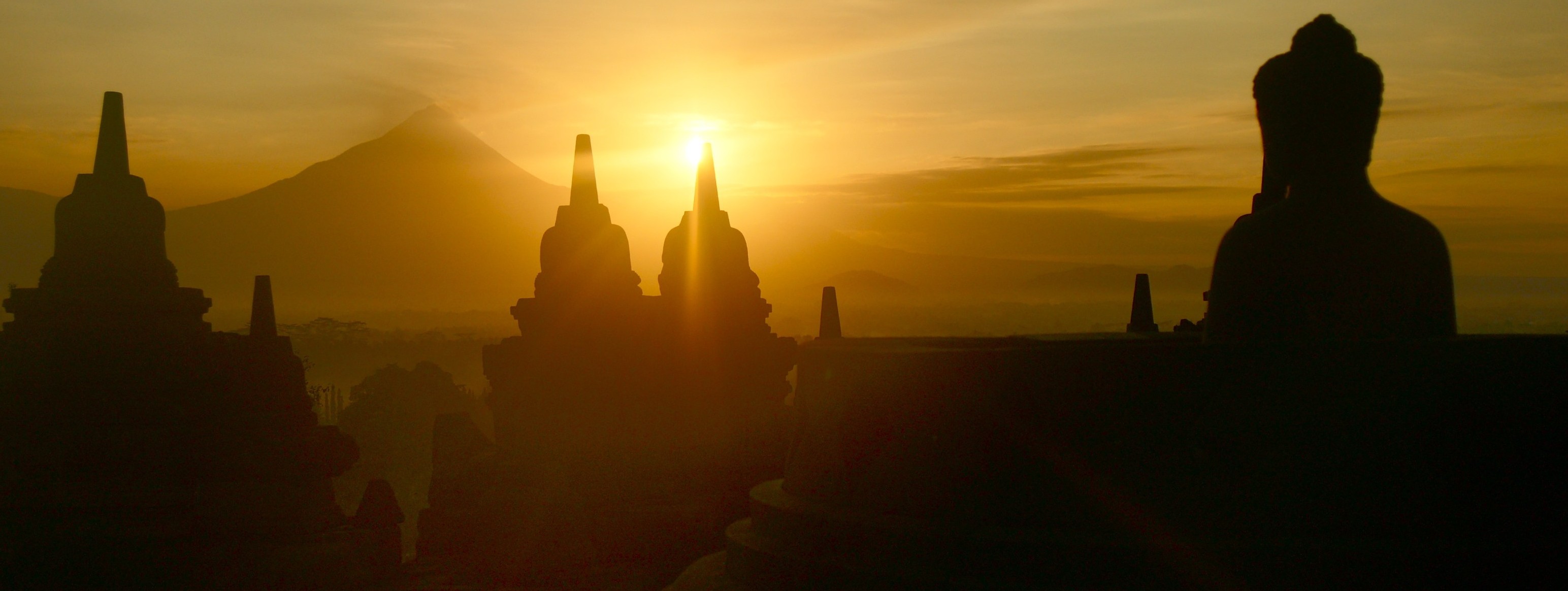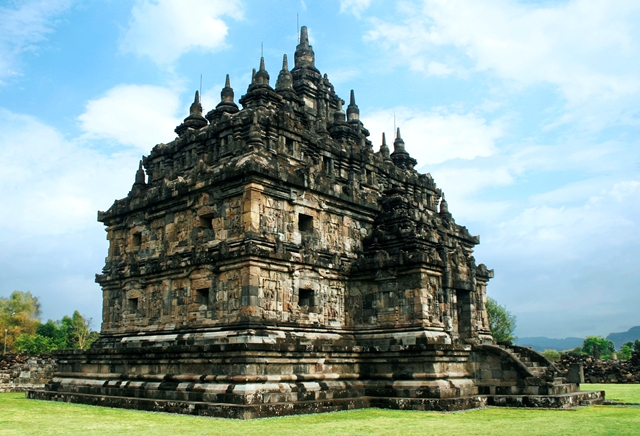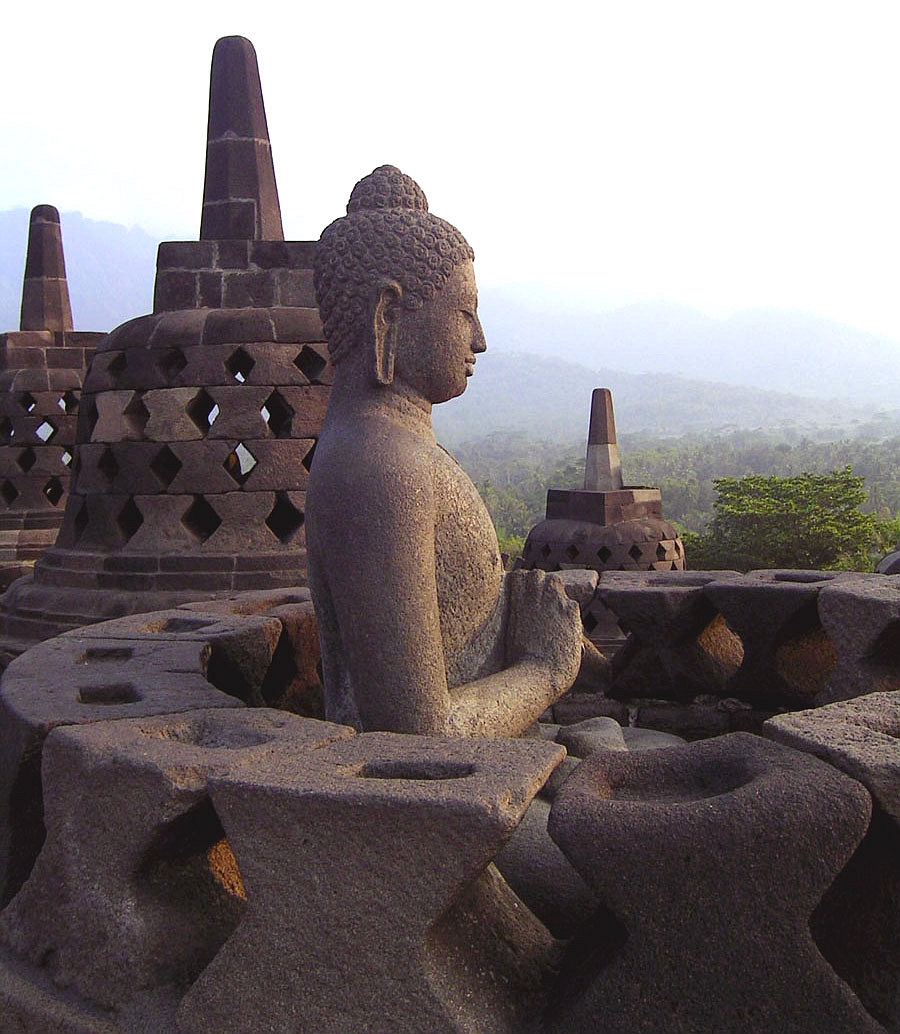
Roughly a thousand years ago, central Java was the dominion of the Mataram Kingdom, which thrived under the Sailiendra dynasty, and which, for its time, was quite advanced. Both prosperous and civilised, it was this kingdom, under the reign of King Samaratungga, which built the magnificent Borobudur temple, a sprawling complex which was, at the time of its construction in the 9th century, the largest Buddhist temple in the world. Today, Borobudur, as a UNESCO World Heritage Site (and Indonesia’s single most-visited tourist attraction), continues to draw visitors from near and far to this region, but if you see nothing of Yogyakarta – called Jogja by locals – while marvelling at the stupas of Borobudur, you will have missed the inimitable charms of one of Indonesia’s most enjoyable cities.
Indeed, some of my fondest memories of my many trips to Indonesia were forged along the streets and alleys of Jogja. The people are as kind and open as you’d ever want to meet, the food is fantastic and authentic Javanese, and if Bali’s soaring tourist prices have left you breathless, Jogja has the cure for what ails you: this fascinating city is easily one of the cheapest tourist destinations in the region… a single traveller can get by fairly comfortably on RM100 per day. Always some of the best values in the region, accommodation in Jogja has improved considerably in the last decade and now spans the range from clean, comfy budget rooms for RM30-40 per night to international-standard boutique villas and posh hotel suites for about RM250-350. Numerous good-quality hotel rooms can be found in the RM120-250 range. Whatever your budget, you will find excellent value for money in Jogja.
Malioboro, The Heart of Jogja
Ask most visitors to Jogja what they most remember, and even if they don’t recall the name, they’ll still talk about “that one main street, you know, with all the shops and cafés and malls.” That street is Jalan Malioboro, a not-to-be-missed stop on the tourist circuit in Jogja. Filled from end to end with a bewildering array of vendors, shops, and – naturally – a few touts here and there, this is the place to go for shoppers, bargain-hunters, and those who enjoy a bit of friendly haggling. Tourists will, naturally, never get the rock-bottom prices locals do, but that’s okay, because if your skills are finely honed enough, you’ll still walk off with that coveted batik scarf, wood carving, or oil painting at a very attractive price.
Historically, Malioboro was among Jogja’s main thoroughfares, and its orientation along a north-south axis between the main Yogyakarta Palace and the imposing Mount Merapi – Indonesia’s most notoriously belligerent volcano – indicated the boulevard’s importance, as to be accorded such a prominent alignment was reserved for important structures and paths. At one time, flower bouquets running the length of the street were a common sight whenever the Palace held a grand event – the name Malioboro in fact means “flower bouquet” in Sanskrit – and though such pageantry isn’t quite as common today, the street has endured as the city’s main centre of activity and celebration.
Today, Jalan Malioboro is the city’s most vibrant shopping promenade, and no visit to Jogja is truly complete without some time spent amid the hustle and bustle of this venerable street. Some of the touts and street vendors can be a bit bothersome, but for the most part, a stroll here is a sensory experience that will linger in your memory. If you feel inclined to take a ride in a becak – many of the three-wheeled pedal-powered carts ply the area around Malioboro – be aware you’ll be expected to haggle here, too, and the initial price quoted is often laughably high, sometimes several times higher than you might be charged in an air-conditioned taxi. Horsedrawn carriages are usually easily spotted, too, and though Malioboro is nobody’s idea of a romantic venue, it could still make for a lasting memory!
Temple Temptations

The magnificent Borobudur is the top draw in central Java, but there are other temples and palaces worth exploring, too. As Borobudur serves as an homage to Buddhism, the temple complex of Prambanan pays its tribute to Hinduism and its pantheon of gods. Built in the ninth century, Prambanan is the largest Hindu temple of ancient Java and has endured despite abandonment, unrestrained jungle growth, a number of earthquakes and volcanic eruptions, and centuries of neglect. Despite this, it remains a site of stunning beauty.
At 47m in height, the main shrine of the Prambanan complex is dedicated to the god Shiva, and two shrines of similar prominence (though only 33m in height each) are dedicated to the other two Hindu gods, Brahma and Vishnu. Originally, there were some 240 temples in the Prambanan complex. Today, all eight of the main temples, as well as the eight smaller shrines in the interior zone, have been restored. However, of the 224 original small Pervara temples, only two have been fully reconstructed. The devastating earthquake that struck Jogja in May 2006 wrought considerable damage on the complex and toppled several of the shrines. Even today, some of the temple structures remain off-limits due to questionable safety. Nevertheless, the grounds and temples are of great interest, particularly for those keen to learn more about the Hindu religion.

Though Borobudur and Prambanan understandably receive a substantial chunk of the press, there are plenty of other temples and palaces in the Jogja area that can be visited, too. With such evocative names as Sambisari, Kedulan, Gampingan, and Plaosan, these temples offer tourists a fine opportunity to learn about the architecture and designs of ancient cultures and to see the remnants of these once-splendid temples. Another nearby archaeological gem is King Boko Palace, a hilltop retreat built over a thousand years ago as a place of spiritual reflection and peace.
These are but a handful of the things that make Yogyakarta such an appealing travel destination. It’s a delightful and inexpensive place to spend a few days, and you’ll come back with great memories to cherish. One of the best resources for all things Jogja is the occasionally mangled English-language website www.yogyes.com, the web’s top travel and tourism portal for this fascinating Javanese city.
AirAsia flies direct to Jogja’s Adisucipto International Airport twice daily.
Read more:
- 3 Waterfalls You Should Visit in Malaysia
- 15 Stunning Photos of Bali Captured by an Indonesian Photographer
- Langkawi: Getting Back to Nature
What are your thoughts on this article? Let us know by commenting below. No registration needed.
Source: The Expat Magazine January 2015
"ExpatGo welcomes and encourages comments, input, and divergent opinions. However, we kindly request that you use suitable language in your comments, and refrain from any sort of personal attack, hate speech, or disparaging rhetoric. Comments not in line with this are subject to removal from the site. "

















